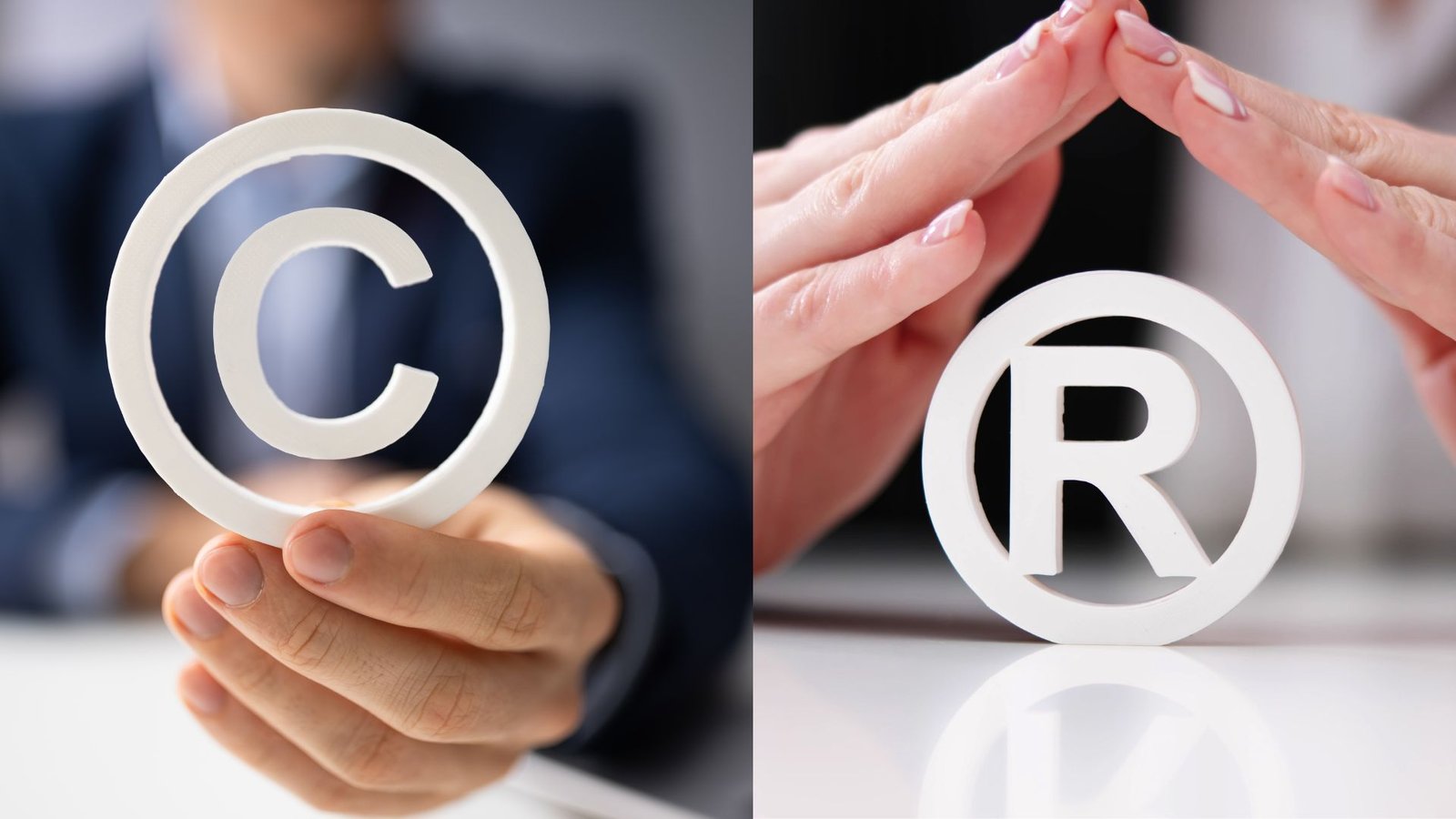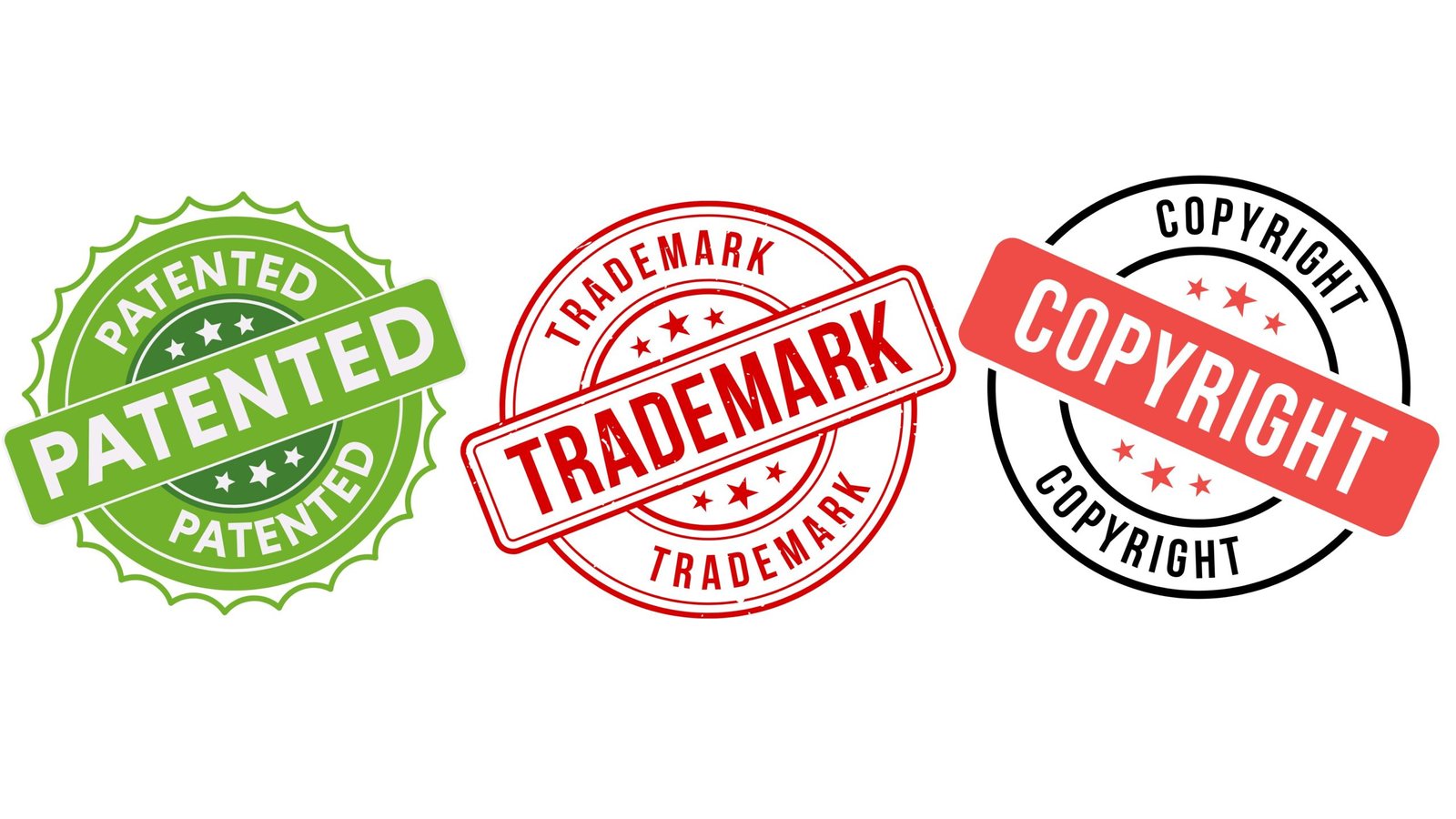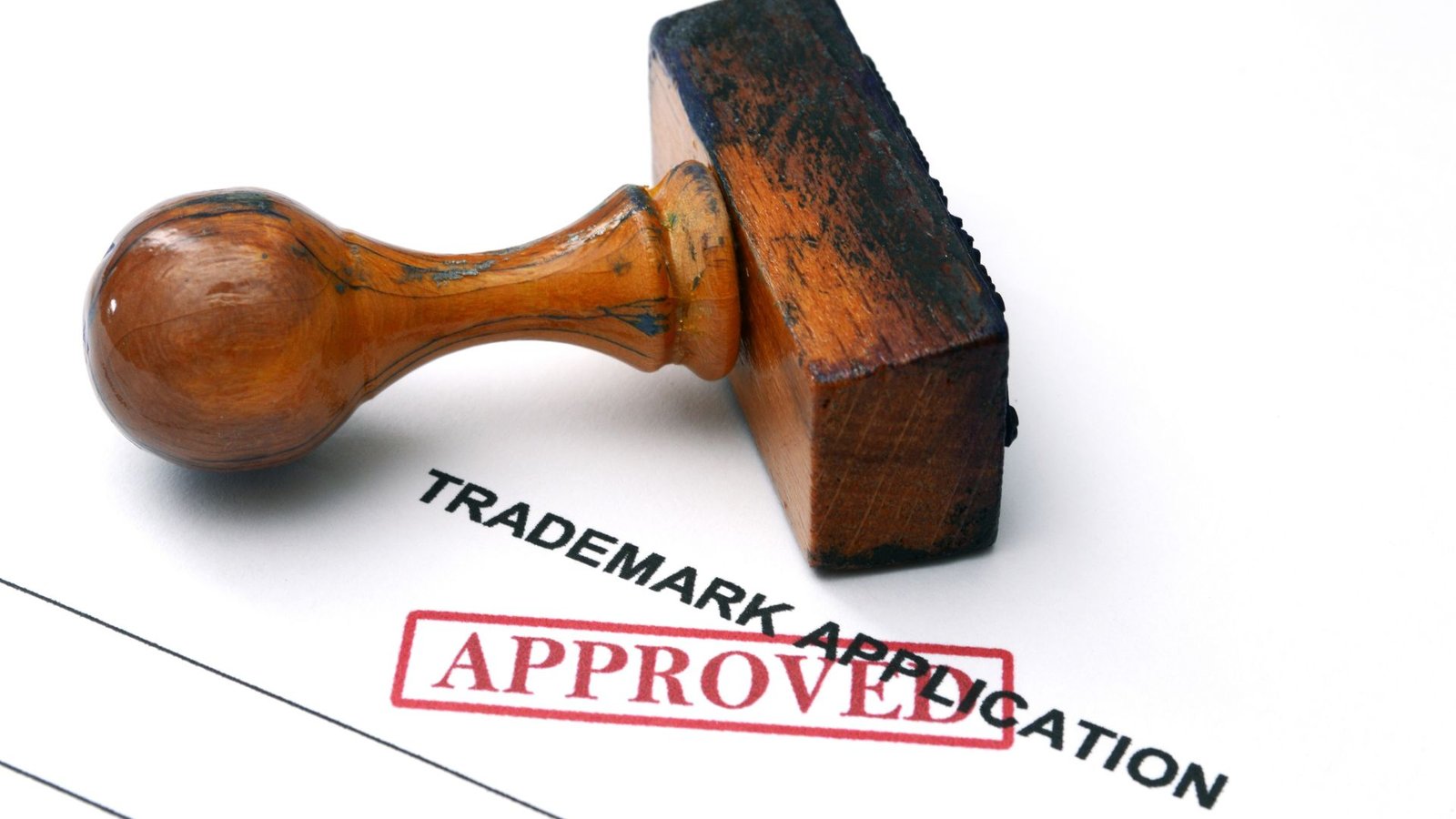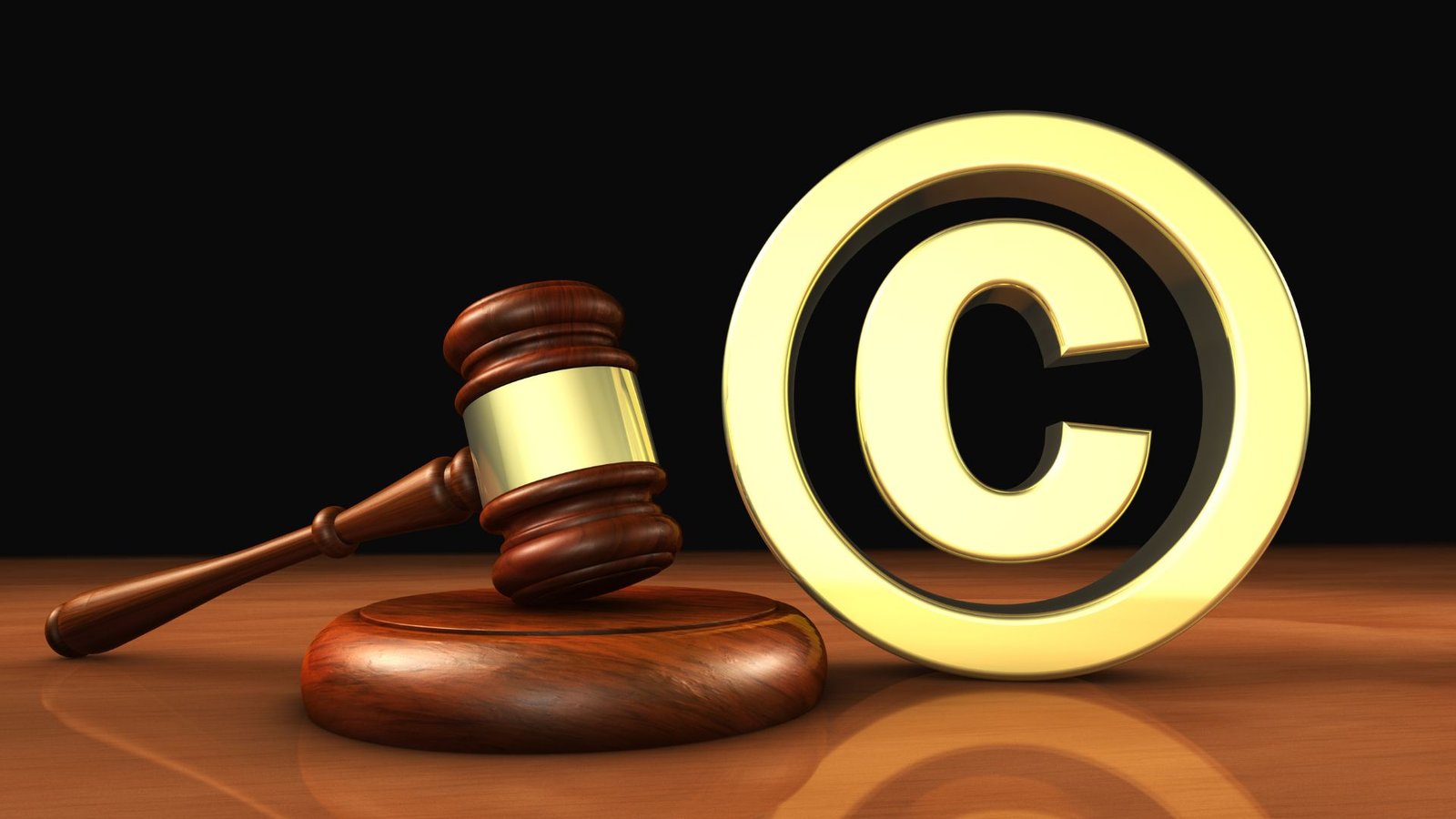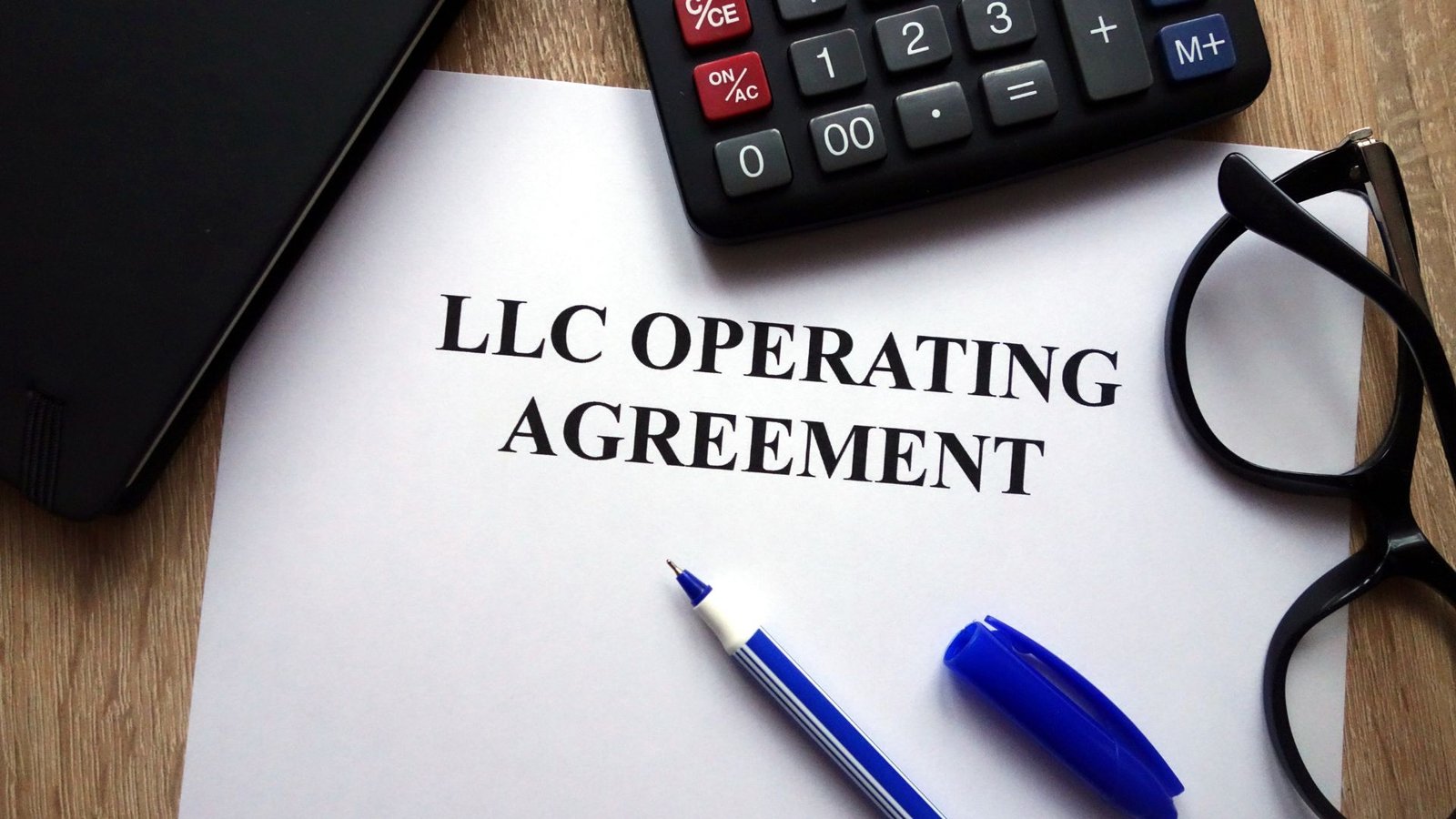On this page you will read detailed information about Key Difference Between Copyright and Trademark.
As you consider protecting your original creative work or branding, you may wonder about the differences between copyright and trademark. With 100 words at your disposal, a brief yet compelling introduction could highlight a few key contrasts. What exactly does copyright safeguard compared to a trademark? Who grants these separate forms of intellectual property rights? This article will explore specifics around copyright versus trademark in the United States, including the purpose and duration of each. Peruse onward for an elucidating overview as you look to shield your own imaginative expressions or branding.
Defining Copyright vs Trademark
Copyright and trademark are two forms of intellectual property protection, but they protect different aspects of creative works and commercial property.
Copyright
Copyright protects original works of authorship, such as books, music, movies, computer software, and architectural works. It gives the creator of the work exclusive rights over the use and distribution of the work for a certain time period. To obtain copyright protection in the U.S., the work must be fixed in a tangible form, such as written on paper or recorded digitally. Copyright allows the creator to control who can make copies of the work, create derivative works, publicly distribute or display the work, or digitally transmit the work. Copyright lasts for the life of the author plus 70 years.
Trademark
A trademark is a word, phrase, symbol, or design that identifies the source of goods or services. Trademark law aims to protect brand identities and prevent consumer confusion. Businesses can register trademarks with the U.S. Patent and Trademark Office, which gives the owner exclusive rights to use the mark on or in connection with the goods or services listed in the registration. Unlike copyright, trademark protection can last indefinitely as long as the mark remains in use. Trademarks also require active protection by the owner, who must police unauthorized use of identical or similar marks.
In summary, while copyright protects the expression of ideas, trademark protects the branding of goods and services. Copyright applies to artistic works, whereas trademarks apply to commercial property. Both grant certain exclusive rights to the owners, but trademarks can provide protection for an unlimited duration as long as the mark is actively used and policed. Understanding the differences between these two forms of intellectual property is key to fully leveraging and protecting creative and commercial assets.
In the previous post, we had shared information about Operating Agreement: What Is an LLC Operating Agreement?, so read that post also
The Purpose of Copyright and Trademark
Copyright and trademark are two forms of intellectual property protection that serve different purposes. Copyright protects original works of authorship, such as books, music, films, and software. The copyright holder has the exclusive right to reproduce, distribute, and create derivative works of the copyrighted material. The purpose of copyright is to incentivize creativity by giving creators control over their works.
Trademark, on the other hand, protects brand names, slogans, logos, and other distinctive brand identifiers. The purpose of trademark is to allow businesses to build brand recognition and goodwill. Trademark prevents others from using a brand name or logo in a way that is likely to confuse consumers or dilute the brand. For example, trademark prevents competitors from using a brand name that is already in use for a similar product.
While copyright arises automatically when a work is created, trademark rights must be actively claimed through use or registration. Copyright has a limited duration, while trademark can last indefinitely as long as it is continuously used. Copyright protects the expression of ideas, not the ideas themselves. Trademark, in contrast, protects the actual brand name or logo.
In summary, the main differences between copyright and trademark are:
- Copyright protects original works of authorship, trademark protects brand identifiers.
- Copyright arises automatically, trademark must be claimed.
- Copyright is time-limited, trademark can last indefinitely.
- Copyright protects expression, not ideas. Trademark protects the actual brand name or logo.
Copyright and trademark work together to promote creativity and fair competition in the marketplace. Understanding the purpose and key differences between these two forms of intellectual property is important for both creators and businesses.
What Can Be Protected Under Copyright and Trademark
Copyright protects original works of authorship, such as literary, dramatic, musical, and artistic works, including books, movies, music, artistic works, and software. A copyright gives the creator the exclusive right to reproduce, distribute, and display the work. It protects the particular expression of an idea, not the idea itself. Copyrights typically last for the life of the author plus 70 years.
In contrast, trademarks protect brand names, logos, slogans, and other distinctive elements that identify the source of goods or services. Trademark rights arise from actual use of the mark in commerce and can last indefinitely as long as the mark continues to be used in that manner. Trademarks protect the commercial association between a brand and its goods and services. They signify the reputation and goodwill of a company.
Some examples of works that can be protected under copyright include:
- Books, articles, poems, etc.
- Photographs, paintings, sculptures, etc.
- Music, movies, TV shows, etc.
- Computer software, mobile apps, websites, etc.
Some well-known trademarks include:
- Brand names like Coca-Cola, Nike, and Apple
- Logos like the Nike swoosh, the McDonald’s golden arches, and the Apple logo
- Slogans such as “Just Do It” and “I’m Lovin’ It”
In summary, while copyright protects creative and artistic works, trademarks protect brand names, logos, and other source identifiers. Copyrights arise automatically upon creation of the work, whereas trademarks are established through commercial use. Both provide legal protections, but for different types of intellectual property. Understanding the differences between these two areas of intellectual property law is key to developing an effective brand protection strategy.
Copyright and Trademark Registration Process
To officially register a copyright or trademark in the U.S., you must file an application with the U.S. Copyright Office or the U.S. Patent and Trademark Office (USPTO), respectively.
Copyright Registration
To register a copyright, you must submit Form TX, also known as the Copyright Form, along with a nonrefundable filing fee. The form requires you to provide details about the work such as the title, publication date, author, and a description of the work. You will also need to send two copies of the work or deposit material. The entire registration process typically takes between 3 to 6 months. Once approved, you will receive a registration certificate that serves as official evidence of your copyright.
Trademark Registration
Trademark registration involves a lengthier process. You must file an application with the USPTO to register a trademark, service mark, collective mark, or certification mark. The application requires:
- A specimen of how you intend to use the mark in commerce.
- A statement of goods/services the mark will be used for.
- Payment of an application filing fee.
- A verified statement that the applicant is the owner of the mark.
The USPTO will examine your application to determine if the proposed mark is eligible for registration. If rejected, you have 6 months to respond or the application will be abandoned. If accepted, the mark will be published in the Official Gazette. Anyone who believes they may be harmed by registration of the mark has 30 days to file an opposition. If no opposition is filed, a registration certificate will issue in approximately 3 to 4 months. The entire process usually takes between 9 months to 2 years.
Both copyright and trademark registrations offer important legal benefits for protecting your intellectual property. While the registration process requires time and resources, securing official registration is worthwhile to formally establish ownership of your creative works or brand.
Copyright and Trademark Infringement
Copyright and trademark are two forms of intellectual property that are often confused. Both copyright and trademark infringement involve using intellectual property that you do not have rights to. However, they involve two very different types of intellectual property. Copyright protects original works of authorship, such as books, songs, movies, software, and architecture. If you copy, distribute or create derivative works based on a copyrighted creation without permission of the copyright holder, it is considered copyright infringement. For example, if you were to download a movie from a torrent site instead of purchasing it or streaming it from a licensed service, that would be copyright infringement.
Trademark, on the other hand, protects brand names, logos, slogans, and other distinctive brand identifiers. Using a trademark in a way that is likely to cause confusion about the source or sponsorship of goods or services constitutes trademark infringement. For example:
- Using a company’s trademarked slogan or logo in your own marketing materials.
- Registering a domain name that incorporates another company’s trademark.
- Selling counterfeit goods that use a company’s trademarked brand name or logo.
While copyright protects creative works themselves, trademark protects a company’s brand identity. Trademark infringement erodes the commercial value of a brand by misleading customers or diluting brand recognition. Both copyright and trademark infringement can have serious legal consequences, including substantial fines and even jail time in some cases.
The key differences to remember are:
- Copyright protects original works of authorship while trademark protects brand identity.
- Copyright infringement involves copying or distributing a creative work without permission while trademark infringement involves misusing a brand name or logo in a way likely to cause confusion.
- Copyright lasts for the life of the author plus 70 years while trademark can last indefinitely as long as it is still used in commerce.
Understanding these distinctions can help you avoid infringing on the intellectual property rights of others and protect your own IP. Consult an attorney if you have any questions about copyright, trademark, or intellectual property law.
Copyright and Trademark Duration and Renewal
Copyrights and trademarks both offer legal protections, but differ in their duration and renewal requirements.
Copyright Duration
A copyright provides legal protection for artistic or intellectual creations like books, music, films, and software for the life of the creator plus 70 years. Copyright protection begins as soon as the work is created and fixed in a tangible format, so no registration or renewal is required to obtain rights. However, registering a copyright with the U.S. Copyright Office does provide additional benefits. Copyrights are not indefinite and will eventually expire, entering the public domain.
Trademark Duration
Trademarks, on the other hand, must be continually used and renewed to remain valid. A federal trademark registration lasts 10 years, but can be renewed indefinitely as long as the mark remains in use. If a trademark is abandoned for three consecutive years, rights to the mark are lost. Trademark holders must file a Section 8 affidavit of use between the 5th and 6th year after registration and every 10 years thereafter to maintain rights. Failure to renew a trademark will result in expiration and loss of rights.
Copyright and Trademark Renewal
In summary, copyrights have a fixed duration and do not require renewal, while trademarks must be continually renewed and used to remain enforceable. Understanding the differences in duration and renewal requirements between copyrights and trademarks is key to effectively establishing and protecting your intellectual property rights. Consulting an attorney specializing in intellectual property law can help ensure your rights are properly secured and maintained long-term.
International Copyright and Trademark Protection
Copyright and trademarks are intellectual property protections that extend beyond a single country’s borders. As a business expands internationally, it is important to consider registering copyrights and trademarks in foreign countries to maximize legal protections.
Copyright
Copyright protects original works of authorship like books, songs, movies, computer software, and architectural works. To obtain copyright protection in another country, you must register the work in that country, which typically involves filing an application and paying required fees. Most countries are part of the Berne Convention, an international agreement that provides automatic copyright protection for works first published in other member countries. However, registration still provides additional benefits like the ability to file lawsuits for infringement.
Trademarks
A trademark protects brand names, logos, slogans, and other distinctive marks used to identify the source of goods or services. Trademark rights are territorial, so a trademark must be registered in each country where protection is sought. The Madrid System allows trademark owners to obtain protection in multiple countries by filing a single application with their national trademark office, which is then transmitted to other designated countries. However, not all countries participate in the Madrid System. Trademark registrations in foreign countries may require an agent or legal representative in that territory to handle the application process.
Expanding into new international markets introduces legal complexities, but with proper planning, businesses can secure robust intellectual property protections worldwide. Registering copyrights and trademarks in foreign countries helps establish a legal monopoly over creative works and brand identity across borders. With the help of the Berne Convention and Madrid System, the process of obtaining international copyright and trademark protection has become more streamlined, allowing companies to scale globally with confidence in their legal rights.
Tips for Protecting Your Copyright and Trademark
To safeguard your intellectual property, it is vital to comprehend the differences between copyright and trademark.
Copyright protects original works of authorship, such as books, songs, software, and movies. As the creator, you have certain exclusive rights to your work for a limited time. To establish a copyright, simply create the work – no registration is required. However, officially registering your copyright with the U.S. Copyright Office provides additional benefits.
Trademark protects brand names, logos, slogans, and other distinctive business identifiers. Unlike copyright, trademark rights do not arise automatically – you must actually use the mark in commerce and register it. The key purposes of a trademark are:
- To identify the commercial source or origin of goods or services
- To signify the quality and consistency of the goods or services
To protect your copyright or trademark:
- Conduct a search to ensure the work or mark is unique. Search the U.S. Copyright Office and Patent and Trademark Office (USPTO) databases.
- Officially register your copyright or trademark. This establishes a public record of your claim and provides legal benefits.
- Use proper marking. Place the ©, ® or TM symbol next to your work or mark. Also include a statement like “All rights reserved” or “Registered trademark”.
- Monitor for and address any infringement. Watch for unauthorized uses of your work or mark that could diminish your rights. Send a cease and desist letter to infringers demanding that they stop.
- Renew and maintain registrations. Copyrights must be renewed after a set time. Trademarks must be continually used in commerce and registrations renewed every 10 years.
- License or assign rights carefully. Only authorize use of your intellectual property in writing through a licensing agreement. Be very selective in assigning ownership of your rights to others.
By understanding the distinction between copyright and trademark and taking proactive steps to protect them, you can safeguard your creative works and business assets for years to come. Let these tips guide you in securing your intellectual property rights.
FAQ: Key Differences Between Copyright and Trademark
Copyright protects creative works such as books, songs, movies, and computer software. It gives the creator exclusive rights over the use and distribution of the work for a limited time. Trademark protects brand names, logos, slogans, and other identifiers that distinguish the goods or services of one company from another. Unlike copyright, trademark protection can last indefinitely as long as the mark remains in use.
I) Copyright exists as soon as a work is created in a fixed, tangible form (written down, recorded, filmed, etc.). Registration with the U.S. Copyright Office provides additional benefits but is not required.
II) Trademark must be registered through an application process with the U.S. Patent and Trademark Office (USPTO). Registration establishes nationwide priority and constructive use of the mark.
I) Copyright covers the particular expression or embodiment of an idea, not the idea itself. It protects the original work as a whole as well as any substantial part that is copied.
II) Trademark only covers the distinctive element that serves to identify the source of goods or services to consumers. It does not cover functional elements or general ideas. The mark must be used exclusively by the owner in commerce to identify their goods/services.
I) Copyright generally lasts for the life of the author plus 70 years for individuals, or 95 years for corporate works.
II) Trademark rights can last indefinitely as long as the mark remains in continuous use in commerce and the registration is properly renewed.
Copyright and trademark rights can both be sold, assigned, or transferred to others. The new owner then has the same rights as the original creator or owner. Proper documentation of the transfer, like an assignment agreement, is required.
In summary, while copyright and trademark are two important forms of intellectual property protection, they protect different subject matter and have distinct requirements and terms. Understanding the differences can help ensure your creative works and brands receive the appropriate protection.
Conclusion
As you have seen, copyright and trademark are two distinct forms of intellectual property protection. While copyright safeguards creative works and trademark protects brands and logos, both play crucial roles for businesses and creators. With an understanding of these key differences, you can better leverage the appropriate protection for your own works and properly respect the IP rights of others. Knowledge in these areas empowers you to make wise decisions that spur innovation while respecting creative contributions. Moving forward, remember that strategic IP plans incorporate copyright, trademark, patents, and trade secrets tailored to your business goals.
Disclaimer
The information and services on this website are not intended to and shall not be used as legal advice. You should consult a Legal Professional for any legal or solicited advice. While we have good faith and our own independent research to every information listed on the website and do our best to ensure that the data provided is accurate. However, we do not guarantee the information provided is accurate and make no representation or warranty of any kind, express or implied, regarding the accuracy, adequacy, validity, reliability, availability, or completeness of any information on the Site. UNDER NO CIRCUMSTANCES SHALL WE HAVE ANY LIABILITY TO YOU FOR ANY LOSS OR DAMAGE OF ANY KIND INCURRED AS A RESULT OR RELIANCE ON ANY INFORMATION PROVIDED ON THE SITE. YOUR USE OF THE SITE AND YOUR RELIANCE ON ANY INFORMATION ON THE SITE IS SOLELY AT YOUR OWN RISK. Comments on this website are the sole responsibility of their writers so the accuracy, completeness, veracity, honesty, factuality and politeness of comments are not guaranteed.
So friends, today we talked about Key Difference Between Copyright and Trademark, hope you liked our post.
If you liked the information about Key Difference Between Copyright and Trademark, then definitely share this article with your friends.

